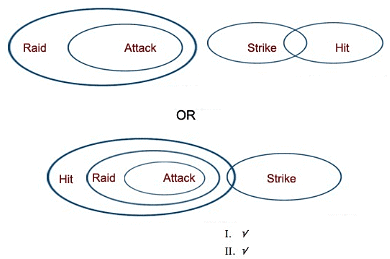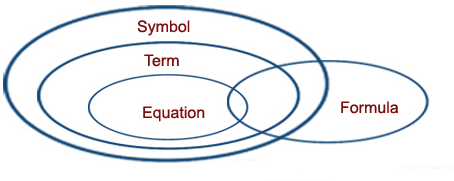Practice Mock Test for SNAP - 8 - CAT MCQ
30 Questions MCQ Test - Practice Mock Test for SNAP - 8
Directions: Read sentence to find out whether there is any grammatical error in it. The sentences are In three separate parts and each one is labelled (a), (b), (c) and (d). In that case, letter (d) will signify a ‘No error’ response.
Directions: Spot the error part of the following sentences.
Directions: Find out the error part of the following sentences.
Directions: Read sentence to find out whether there is any grammatical error in it. The sentences are In three separate parts and each one is labelled (a), (b), (c) and (d). In that case, letter (d) will signify a ‘No error’ response.
Directions: Spot the error part of the following sentences.
Directions: Choose the word most nearly opposite to the given word.
Tragic
Directions: Choose the word most nearly opposite to the given word.
Traduce
Directions: Spot the error part of the following sentences.
Bhuvan forgot 1)/ to take 2)/ their pen. 3)/ No error 4)
Directions: In the sentence given below, replace the phrase underlined to make the sentence grammatically correct. If the sentence is correct as it is, mark (d) i.e. “No correction required” as the answer.
Q. Whether I stay in Mumbai or Pune, it is all and one to me.
Directions: In the following question, an idiom or proverb has been underlined. Choose its correct meaning in the given context from the alternatives given below.
Q. Her fame spread far and wide because she was a talented singer.
Directions: Choose the word or group of words which is most similar in meaning to the word.
Garrulity
Directions: Choose the word or group of words which is most similar in meaning to the word.
Vindicate
Directions: In the following questions, write a single word which can be replaced with the key sentence.
Q. 'A large enclosure for keeping birds' is also called as __________
Directions: In the following questions, write a single word which can be replaced with the key sentence.
Q. A house where an Eskimo lives.
Find the odd term from the given 4 options which does not belong to the group of remaining options.
Four of the following five are alike in a certain way and so form a group. Which is the one that does not belong to that group?
Directions: In these question, relationship between different elements is shown in the statements. The statements are followed by conclusions. Study the conclusions based on the given statements and select the appropriate answer.
Statements:
X > Y ≥ Z, A > Z, B < A
Conclusions:
I. B < X
II. A > X
How many such pairs of letters are there in the word QUICKLY, each of which has as many letters between them in the word (in both forward and backward directions) as in the English alphabetical series?
Directions: Study the arrangement carefully and answer the questions given below.
4 2 6 1 3 8 9 5 8 1 6 5 1 5 8 5 3 9 4 9 2 3 2 1 5 7 2 6 2 4 2 7 4
Q. How many such 2s are there in the above arrangement, each of which is immediately preceded by an odd and also immediately followed by an odd digit?
Directions: Ten people are sitting in two parallel rows containing five people each, in such a way that there is equal distance between adjacent persons. In row-1, J, K, L, M and N are seated (not necessarily in the same order) and all of them are facing south. In row-2, V, W, X, Y and Z are seated (not necessarily in the same order) and all of them are facing north. Therefore in the given seating arrangement each member seated in a row faces another member of the other row. Z sits third to the right of W. V sits second to the left of Z. the persons facing V sits to the immediate right of K. Only one person sits between K and M. J is not an immediate neighbour of K. only two people sit between J and L. neither K nor J faces Y
Q. What is the position of Z with respect to Y?
Directions: Seven friends namely A, B, C, D, E, F and G are standing in a straight line facing North but not necessarily in the same order. D stands exactly in the centre of the line. Only two persons stand between D and F.
A stands to the immediate left of C.
A stands to the right of D (may or may not be the immediate right). Only one person stands between A and B. G stands second to the left of B.
Q. Which of the following is true regarding E?
Directions: Study the given information and answer the questions.
A number arrangement machine, when given an input line of number rearranges their following a particular rule in each step. The following is the illustration of the input and steps of arrangement. (All the numbers are two-digit number)
Input prepare 14 21 a new method 72 38 97 for studies 68
Step I for a prepare 14 21 new method 72 38 97 studies 68
Step II 21 14 for a prepare new method 72 38 97 studies 68
Step III new method 21 14 for a prepare 72 38 97 studies 68
Step IV 68 38 new method 21 14 for a prepare 72 97 studies
Step V studies prepare 68 38 new method 21 14 for a 72 97
Step VI 97 72 studies prepare 68 38 new method 21 14 for a Step VI is the last step of above arrangement as the intended arrangement is obtained. As per the rules followed in the given steps, find out the appropriate steps for the given input.Input developing 44 markets 38 27 economic practice required 16 83 72 today
Q. Which step are the elements ’72 today required 44’ found in the same order?
Directions: The question below consist of a question and two statements numbered I and II given below it. You have to decide whether the data given in the statements are sufficient to answer the questions. Read both the statements and give answer
Q. How is the word ‘GATES’ coded in the code language?
I. ‘BRICK’ is coded as ‘LDJSC’ and ‘PIN’ is coded as ‘OJQ’.
II. ‘WATER’ is coded as ‘SFUBX’ and ‘DISH’ is coded as ‘ITJE’
Directions: Study the following information and answer the question.
Seven people P, Q, R, S, T, U and V have a seminar but not necessarily in the order, on seven different months (of the same year) namely January, February, March, June, August, October and December. Each of them also likes a different fruit namely Banana, Grapes, Papaya, Orange, Mango, Litchi, and Apple but not necessarily in the same order. R has a seminar in a month which has less than 31 days. Only two people have seminar between R and S. The one who likes Banana has a seminar immediately before S. Only one person has a seminar before the one who likes Papaya. Q has a seminar immediately after the one who likes Papaya. Only three people have a seminar between Q and the one who likes Mango.T likes neither Mango nor Papaya. P has a seminar immediately before T. V likes Apple. The one who likes Grapes has a seminar in the month, which has less than 31 days. The one who has a seminar in March does not like Orange.
Q. As per the given arrangement, R is related to Banana and Q is related to Orange following a certain pattern, which of the following is V related to following the same pattern?
Directions: In this question two/three statements followed by two conclusions numbered I and II have been given. You have to take the two/three given statements to be true even if they seem to be at variance from commonly known facts and then decide which of the given conclusions logically follow from the given statements disregarding commonly known facts.
Statements: Some strikes are hits. No strike is a raid. All attacks are raids.
Conclusions
I. No strike is a raid.
II. All attacks being hits is a possibility.
Directions: In question below a statement is given followed by two courses of action numbered I and II. A course of action is a practicable and feasible step or administrative decision to be taken for follow-up, improvement, or further action in regard to the problem, policy, etc. On the basis of the information given in the statement, you have to assume everything in the statement to be true and decide which of the suggested courses of action logically follow(s) for pursuing.
Statement: There is no motivation among today's generation to join the armed forces owing to frequent transfers to risky areas. Perhaps they are not aware of the good side of it.
Courses of Action
I. Short term internship should be introduced at high school level to give students a peak into the adventurous life of the forces and provide a more realistic job purview.
II. The salary levels of the defense forces should be increased with immediate effect.n.
Directions: In these question below a statement is given followed by two assumptions/ inferences numbered I and II. An assumption is something supposed or taken for granted and an inference is something which can be directly inferred from the given facts. You have to consider the statement and the following assumptions / inferences and decide which of those is / are implicit in the statement.
Statement: “Travellers with a ticket for the second class, if found travelling in the first class compartments would be penalized''-Notice in the compart- ments of a train. Assumptions
I. Travellers with a ticket for the first class are also not allowed to travel in the second class compartments.
II. Inspections are carried out in the train to check the tickets.
Directions: In these question below a statement is given followed by two assumptions/ inferences numbered I and II. An assumption is something supposed or taken for granted and an inference is something which can be directly inferred from the given facts. You have to consider the statement and the following assumptions / inferences and decide which of those is / are implicit in the statement.
Statement: Railway does not provide concession to any one for travelling to certain holiday destinations.
Assumptions
I. Railway services are available for travelling to these holiday destinations.
II. Railway provides concession to certain persons for travelling to places other than these holiday destinations.
Directions: The questions below are given three statements followed by two conclusions numbered I and II. You have to take the given statements to be true even if they seem to be at variance from commonly known facts.Read all the conclusions and then decide which of the given conclusions logically follows from the given statements disregarding commonly known facts.
Statement: Some ratios are per cent. All per cent are fractions. No fraction is a section.
Conclusions
I. No section is a percent.
II. All ratios being fractions is a possibility.
Directions: In this question two/three statements followed by two conclusions numbered I and II have been given. You have to take the two/three given statements to be true even if they seem to be at variance from commonly known facts and then decide which of the given conclusions logically follow from the given statements disregarding commonly known facts.
Statements Some equations are formulae. All equations are terms. All terms are symbols.
Conclusions
I. All equations are symbols
II. No symbol is a formula.

























